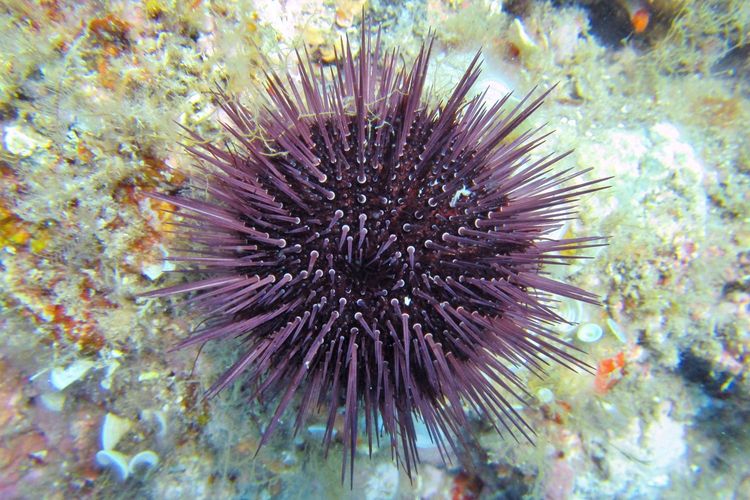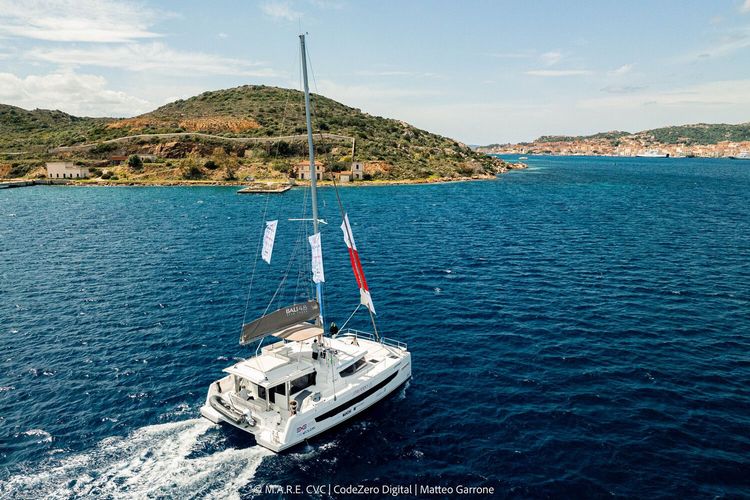
Sea urchins are echinoderms, relatives of starfish, and live on the seafloor. There are many different species worldwide, but in the Mediterranean Sea the two most well-known are the purple sea urchin (Paracentrotus lividus) and the black sea urchin (Arbacia lixula). Both are keystone species for the ecosystem and are also widely recognized in gastronomy.
These seemingly simple organisms play a crucial role: they help maintain the balance of marine ecosystems by regulating algae growth and providing food for predators.
Biology and curiosities: more complex than they seem
Behind their rigid shell and sharp spines, sea urchins hide fascinating traits. Aristotle was the first to describe their mouth, whose structure resembled a lantern, hence the name “Aristotle’s lantern.” Located on the underside, it is a complex chewing apparatus with five movable teeth. Moreover:
- They are herbivores: mainly feeding on algae, making them true “gardeners of the sea.”
- Indicator species: their health reveals much about the state of the marine environment.
- Males and females look identical: they cannot be distinguished from the outside.
An economic and cultural resource under pressure
Sea urchins are not only essential for the environment: they are also an economic resource, linked to traditional fishing and Mediterranean cuisine. However, high commercial demand and recreational fishing have drastically reduced sea urchin populations in many coastal areas.
Fishing is not the only threat. Urchins are increasingly vulnerable due to climate change and the acidification of the Mediterranean:
- A study published in 2023 in Marine Pollution Bulletin, conducted by ISPRA together with the University of Nottingham, showed that sea urchins are now more sensitive to copper pollution than in the past. This means that climate change has weakened their ability to tolerate toxic substances, making mass die-offs more frequent.
- Furthermore, the symbolic Mediterranean species, the purple sea urchin (Paracentrotus lividus), is now at risk. A recent international study published in 2025 in Nature – Scientific Reports analyzed populations in Sicily and Apulia, revealing a clear decline.
A new threat: alien sea urchins
On top of the decline of native species comes the arrival of invasive alien species, accidentally introduced via maritime routes. Among them, the tropical sea urchin Diadema setosum, native to the Indo-Pacific. With its long, sharp spines, it has already been reported in several parts of the Mediterranean. Its presence can disrupt local balances, competing with already struggling native sea urchins.


